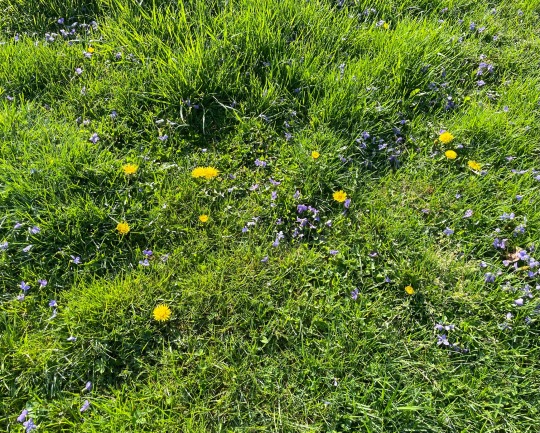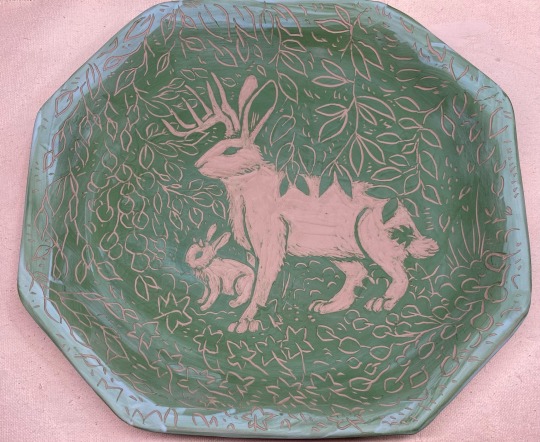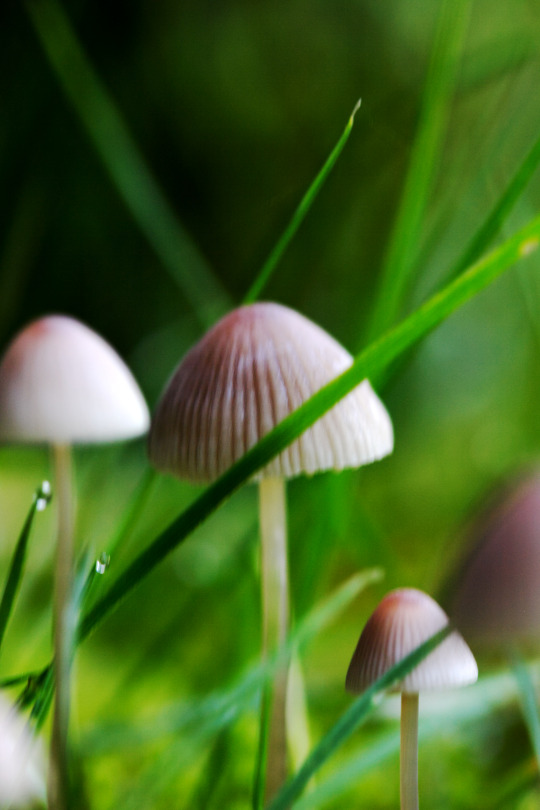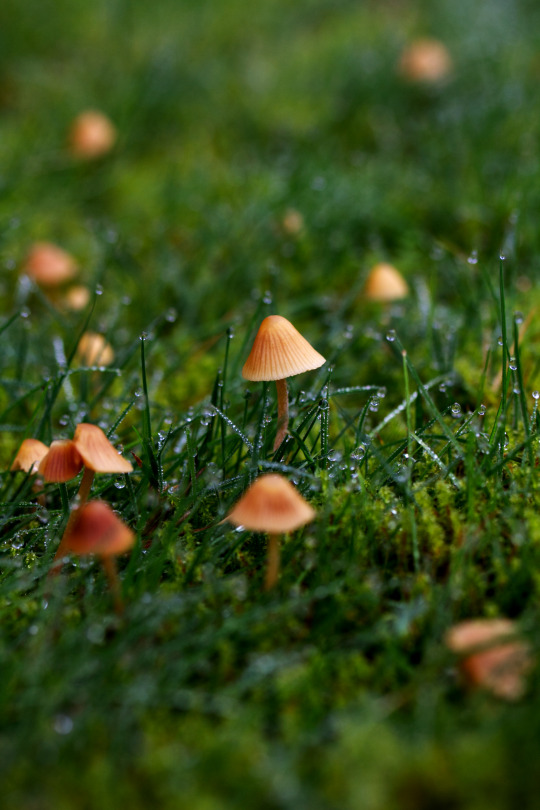#Lawn
Text
What i've been learning thru my research is that Lawn Culture and laws against "weeds" in America are deeply connected to anxieties about "undesirable" people.
I read this essay called "Controlling the Weed Nuisance in Turn-of-the-century American Cities" by Zachary J. S. Falck and it discusses how the late 1800's and early 1900's created ideal habitats for weeds with urban expansion, railroads, the colonization of more territory, and the like.
Around this time, laws requiring the destruction of "weeds" were passed in many American cities. These weedy plants were viewed as "filth" and literally disease-causing—in the 1880's in St. Louis, a newspaper reported that weeds infected school children with typhoid, diphtheria, and scarlet fever.
Weeds were also seen as "conducive to immorality" by promoting the presence of "tramps and idlers." People thought wild growing plants would "shelter" threatening criminals. Weeds were heavily associated with poverty and immortality. Panic about them spiked strongly after malaria and typhoid outbreaks.
To make things even wilder, one of the main weeds the legal turmoil and public anxiety centered upon was actually the sunflower. Milkweed was also a major "undesirable" weed and a major target of laws mandating the destruction of weeds.
The major explosion in weed-control law being put forth and enforced happened around 1905-1910. And I formed a hypothesis—I had this abrupt remembrance of something I studied in a history class in college. I thought to myself, I bet this coincides with a major wave of immigration to the USA.
Bingo. 1907 was the peak of European immigration. We must keep in mind that these people were not "white" in the exact way that is recognized today. From what I remember from my history classes, Eastern European people were very much feared as criminals and potential communists. Wikipedia elaborates that the Immigration Act of 1924 was meant to restrict Jewish, Slavic, and Italian people from entering the country, and that the major wave of immigration among them began in the 1890s. Almost perfectly coinciding with the "weed nuisance" panic. (The Immigration Act of 1917 also banned intellectually disabled people, gay people, anarchists, and people from Asia, except for Chinese people...who were only excluded because they were already banned since 1880.)
From this evidence, I would guess that our aesthetics and views about "weeds" emerged from the convergence of two things:
First, we were obliterating native ecosystems by colonizing them and violently displacing their caretakers, then running roughshod over them with poorly informed agricultural and horticultural techniques, as well as constructing lots of cities and railroads, creating the ideal circumstances for weeds.
Second, lots of immigrants were entering the country, and xenophobia and racism lent itself to fears of "criminals" "tramps" and other "undesirable" people, leading to a desire to forcefully impose order and push out the "Other." I am not inventing a connection—undesirable people and undesirable weeds were frequently compared in these times.
And this was at the very beginnings of the eugenics movement, wherein supposedly "inferior" and poor or racialized people were described in a manner much the same as "weeds," particularly supposedly "breeding" much faster than other people.
There is another connection that the essay doesn't bring up, but that is very clear to me. Weeds are in fact plants of the poor and of immigrants, because they are often medicinal and food plants for people on the margins, hanging out around human habitation like semi-domesticated cats around granaries in the ancient Near East.
My Appalachian ancestors ate pokeweed, Phytolacca americana. The plant is toxic, but poor people in the South would gather the plant's young leaves and boil them three times to get the poison out, then eat them as "poke salad." Pokeweed is a weed that grows readily on roadsides and in vacant lots.
In some parts of the world, it is grown as an ornamental plant for its huge, tropical-looking leaves and magenta stems. But my mom hates the stuff. "Cut that down," she says, "it makes us look like rednecks."
9K notes
·
View notes
Text

The Garden Book, 1984
#vintage#vintage interior#1980s#80s#interior design#home decor#stone#pavers#garden#landscape#design#palm#English#European#style#home#architecture#lawn#patio set#mansion
2K notes
·
View notes
Text

꧁★꧂
919 notes
·
View notes
Text


Happiness in the grass.
375 notes
·
View notes
Text

Via oups_le_chon
233 notes
·
View notes
Link
In a major sustainability win, Las Vegas, Nevada has now outlawed "nonfunctional” grass turf.
Anyone familiar with this topic knows that grass lawns are a sustainability nightmare--they are essentially a monoculture of useless grass that demands huge investments of fertilizer, herbicide, and especially water to maintain.
Laws like this and other water conservation measures have allowed Las Vegas to decrease their per-person water use by around 50%. Hopefully, this law will pave the way for similar measures in other areas experiencing water scarcity.
#water conservation#water consumption#sustainability#lawn culture#lawn#water#climate change#environment#las vegas#global warming#good news
3K notes
·
View notes
Text





Plant of the Day
Tuesday 9 April 2024
In this sheltered garden it was great to see that Anemone coronaria De Caen Group (garden anemone) had naturalised in the lawn. These tuberous perennials need a moist but well-drained soil, in partial shade or sun.
Jill Raggett
#anemone#garden anemone#De Caen Group#pink flowers#red flowers#tuberous perennial#plants#horticulture#garden#gardens#well drained soil#kent#deal#lawn#meadow#naturalised
125 notes
·
View notes
Text
i learned that mowing American lawns uses 800 million gallons of gas every year (x)

222 notes
·
View notes
Text
The second time I played Stardew Valley, during the egg festival, I accidentally spent 1600g on lawn flamingos and my partner almost cried
#silly#tags tags tags#lawn flamingos#stardew valley#stardew#sdv#flamingo#lawn flamingo#egg festival#egg#festival#lawn#accident#accidents#funny#goofy#short story#eggs#eggy#I had a sex dream about sir pentious#oh my god#egge
66 notes
·
View notes
Photo

(via Pin on Nail 2023 || Curated with love by yogadaily)
#sirsasana#lawn#garden#park#yogainthepark#yogabun#headstand#yoga#yogi#yogini#yogaposes#yogapose#asana#asanas#yogainspiration#inspiration#inspire#inspirational#inspired#motivation#motivational#yogamotivation#yogaaesthetic#Aesthetic#manifestation#manifest#manifesting#yogadaily#fitness#health and fitness
132 notes
·
View notes
Text

Garden act as extension of the countryside. The foreground planting in this damp location is domestic, but it reflects its location for over the mown path wild planting folds naturally into the background of trees, with incidental sculptural elements on the left, such as the fern.
The Garden Book, 1984
#vintage#vintage interior#1980s#80s#interior design#home decor#garden#landscaping#country#plants#stairs#flowers#lawn#forest
889 notes
·
View notes
Text

carved this one a week ago.
what do you call a baby jackalope?
…this isn’t the start of a joke I’m genuinely asking lol
a baby hare (jackrabbits are hares) is a leveret. a baby antelope is a calf. could also go with fawn I guess, since mine tend towards deer antlers. and baby rabbits are kits or kittens
#kitfawn#kittenfawn#leverawn#lawn#lol#jackafawn#leveretlope#these are just getting worse#pottery#ceramics#sgraffito#ceramic#carving#ceramic art#underglaze painting#jackalope art#jackalopes#jackalope
250 notes
·
View notes
Text




The mushrooms on my front lawn
96 notes
·
View notes
Text
Via guineavale_tasmania
151 notes
·
View notes

